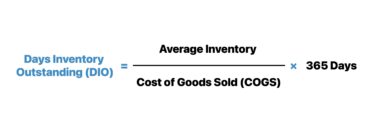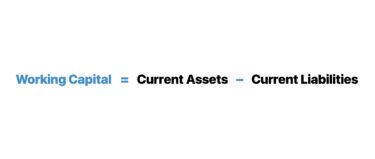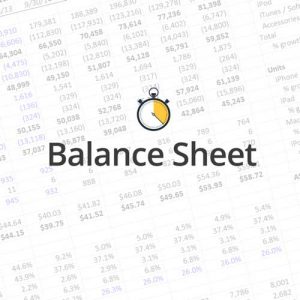- What is Days Sales Outstanding?
- How to Calculate Days Sales Outstanding (DSO)
- Days Sales Outstanding Formula (DSO)
- Days Sales Outstanding Calculation Example
- What is a Good Days Sales Outstanding (DSO)?
- How to Lower Days Sales Outstanding (DSO)
- Days Sales Outstanding Calculator (DSO)
- 1. Income Statement Assumptions
- 2. Days Sales Outstanding (DSO) Calculation Example
- 3. Accounts Receivable Forecast
What is Days Sales Outstanding?
The Days Sales Outstanding (DSO) is a working capital metric that measures the efficiency at which a company collects cash from credit purchases.

- Days sales outstanding (DSO) measures the average number of days it takes for a company to collect cash from credit purchases.
- DSO is calculated as the average accounts receivable (A/R) outstanding divided by revenue, multiplied by the number of days in the period of time (usually 365 days).
- A lower DSO value reflects more cash on hand, while a higher DSO indicates slower credit sales to cash conversion, leading to low liquidity and cash flow generation.
- DSO provides insights into a company’s operating efficiency in managing its receivables, which management can utilize to better optimize their cash flow and liquidity risk.
How to Calculate Days Sales Outstanding (DSO)
The days sales outstanding (DSO) is a working capital metric that measures the number of days it takes a company to retrieve cash payments from customers who paid using credit.
Usually, the DSO metric is expressed on an annual basis for comparability, so the average accounts receivable balance is used in the calculation to prevent a timing mismatch.
The accounts receivable (A/R) line item on the balance sheet represents the value of the cash still owed to a company for products or services “earned” (i.e., delivered to customers) per accrual accounting standards.
Customers nowadays are often presented with the option to pay in the form of cash or credit.
In the latter option, the customer has more time post-purchase to actually complete the payment obligation in cash.
Since days sales outstanding (DSO) is the number of days it takes to collect due cash payments from customers who paid on credit, a lower DSO is preferred to a higher DSO.
- Lower Days Sales Outstanding (DSO)➝ A low DSO implies the company can convert credit sales into cash relatively quickly, and the duration that receivables remain outstanding on the balance sheet before collection is shorter.
- Higher Days Sales Outstanding (DSO) ➝ But a higher DSO indicates the company is unable to quickly convert credit sales into cash, and the longer the receivables remain outstanding (and less liquidity the company has).
Days Sales Outstanding Formula (DSO)
The calculation of days sales outstanding (DSO) involves dividing the accounts receivable balance by the revenue for the period, which is then multiplied by 365 days.
Where:
- Average Accounts Receivable = (Ending Accounts Receivable + Beginning Accounts Receivable) ÷ 2
- Net Revenue = Gross Revenue – Returns – Discounts
The reason the days sales outstanding (DSO) metric matters in analyzing the operating efficiency of a company is that faster cash collections from customers directly contribute to increased liquidity (i.e. more cash on hand).
- Liquidity Risk ➝ The benefits of increased liquidity – i.e. cash on hand – should be intuitive, from a risk standpoint.
- Cash Flow Generation ➝ The increase in free cash flow (FCF) can be allocated for various purposes, such as reinvestments or capital expenditures (Capex), where a positive return on investment is achievable – rather than merely waiting for the cash payment.
Days Sales Outstanding Calculation Example
Suppose a company accounts receivable (A/R) balance of $30k and $200k in revenue.
If we divide $30k by $200k, the result is 0.15 (or 15%).
We then multiply 15% by 365 days to get approximately 55 for DSO, which means that once a company has made a sale, it takes ~55 days to collect the cash payment.
The product or service has been delivered to the customer (and thus, the revenue is “earned”).
But over the course of the waiting period, the company has yet to be paid in cash, despite the revenue being recognized under accrual accounting.
Therefore, the only remaining step is for the customer to hold up their end of the bargain by actually paying the company in cash.
- Accounts Receivable (A/R) = $30,000
- Revenue = $200,000
- A/R % of Revenue = 15%
- Days Sales Outstanding (DSO) = 15% × 365 Days = 55x
Similar to the calculation of days inventory outstanding (DIO), the average balance of A/R could be used (i.e., the sum of the beginning and ending balance divided by two) to match the timing of the numerator and denominator more accurately.
But the more common approach is to use the ending balance for simplicity, as the difference in methodology rarely has a material impact on the B/S forecast.
What is a Good Days Sales Outstanding (DSO)?
If a company’s days sales outstanding (DSO) is increasing over time relative to historical periods, the change implies operational inefficiencies to fix, as more time is required to collect cash from credit sales.
On the other hand, if a company’s days sales outstanding (DSO) is decreasing, the downward trend is a positive sign suggesting the company is more efficient at cash collection (and thus has more cash).
As a general rule of thumb, companies strive to minimize days sales outstanding (DSO), since it implies the current payment collection method is efficient.
Recall that an increase in an operating working capital asset is a reduction in FCFs (and the reverse is true for working capital liabilities).
That said, an increase in A/R represents an outflow of cash, whereas a decrease in A/R is a cash inflow, as it means the company has been paid and thus has more liquidity (cash on hand).
- Decreasing Days Sales Outstanding (DSO) ➝ Efficient Cash Collection from Credit Sales (Higher Free Cash Flow)
- Increasing Days Sales Outstanding (DSO) ➝ Inefficient Cash Collection from Credit Sales (Less Free Cash Flow)
One exception, however, is for seasonal companies, where sales are concentrated in a specific quarter, or cyclical companies where annual sales are inconsistent and fluctuate based on the prevailing economic conditions.
While analyzing only credit sales, rather than net sales, is technically more accurate, public companies seldom report their revenue with cash and credit sales separated, or the details around the timing of customer purchases, in their SEC financial filings (10-K, 10-Q).
For example, a DSO of 85 days could be the industry standard in a high-end industrial products manufacturer with commercial customers, expensive pricing, and low-frequency purchases, whereas 85 days would be a concerning figure for a company in the clothing retail industry.
For our hypothetical clothing retailer, it is presumably necessary to improve its current collection methods, as confirmed by its DSO trailing its industry peers (i.e. competitors).
How to Lower Days Sales Outstanding (DSO)
For inefficiently-run companies with DSOs greater than their industry comparables, common methods to lower the DSO include the following examples:
- Decline Payments via Credit (or Offer Incentives such as Discounts for Cash Payments)
- Identify Customers with Repeated History of Delayed Payments (Place Targeted Restrictions – e.g., Require Upfront Cash Payments)
- Perform Customers Credit Background Checks (Relevant for Installment Payment Agreements)
However, in certain cases, extended DSOs could be a function of a customer making up a significant source of revenue for the company, which enables them to push back their payment dates (i.e., buyer power and negotiating leverage).
Thus, it is critical to not only diligence industry peers (and the nature of the product/service sold) but the customer-buyer relationship.
For example, a major customer that has a track record of delayed payments is not considered as problematic, especially if the relationship with the customer is long-term and there have never been any past concerns about this particular customer not paying.
Days Sales Outstanding Calculator (DSO)
We’ll now move to a modeling exercise, which you can access by filling out the form below.
1. Income Statement Assumptions
Suppose we’re tasked with forecasting the accounts receivable (A/R) balance of a hypothetical company that reported revenue of $200mm in 2020.
Over the course of the projection period, the company’s management team expects revenue to grow at a constant rate of 10.0% each year.
- Revenue (2020A) = $200mm
- Revenue Growth (%) = 10% per Year
2. Days Sales Outstanding (DSO) Calculation Example
The first step to projecting accounts receivable is to calculate the historical DSO.
The DSO for 2020 can be calculated by dividing the $30mm in A/R by the $200mm in revenue and then multiplying by 365 days, which comes out to 55, which means that it takes the company roughly ~55 days on average to collect cash from credit sales.
Here, we only have a single data point to work with (2020 DSO = 55 days), but for modeling on the job, it is ideal to take a close look at historical trends over multiple years.
The general rules of thumb to perform trend analysis on a company’s days sales outstanding (DSO) are as follows.
- Consistent Trend → If the DSO has remained consistent year-over-year, then you could simply extend the DSO assumption to future years (i.e., link to the cell on the left). Or, you can take the average of the past couple of years to normalize for any minor cyclicality.
- Upward or Downward Trend → However, if DSO has been trending upward or downward, this would warrant a more in-depth look into what is happening internally at the company. If a company is making progress towards becoming more efficient at collecting payments, then A/R days should gradually continue to decrease over time. But the cause of the decrease in DSO should be identified before blindly carrying the assumption forward.
Note: As a sanity check, a company’s days sales outstanding (DSO) assumptions should also be referenced against the average DSO of comparable peers.
3. Accounts Receivable Forecast
Now, we can project A/R for the forecast period, which we’ll accomplish by dividing the carried-forward DSO assumption (55 days) by 365 days and then multiply it by the revenue for each future period.
- Days Sales Outstanding (DSO) = 55x (“Straight-Lined”)
For example, A/R is forecasted to be $33mm in 2021, which was calculated by dividing 55 days by 365 days and multiplying the result by the $220mm in revenue.
The output for the A/R projections from 2021 to 2025 from our completed days sales outstanding (DSO) model is as follows:
- Accounts Receivable, 2021E = $33 million
- Accounts Receivable, 2022E = $36 million
- Accounts Receivable, 2023E = $40 million
- Accounts Receivable, 2024E = $44 million
- Accounts Receivable, 2025E = $48 million

Everything You Need To Master Financial Modeling
Enroll in The Premium Package: Learn Financial Statement Modeling, DCF, M&A, LBO and Comps. The same training program used at top investment banks.
Enroll Today






